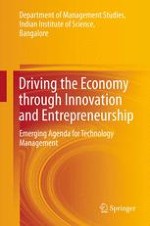2013 | OriginalPaper | Chapter
Does “Strategic Patenting” Threaten Innovation and What Could Happen If It Did?
Author : Bernard Girard
Published in: Driving the Economy through Innovation and Entrepreneurship
Publisher: Springer India
Activate our intelligent search to find suitable subject content or patents.
Select sections of text to find matching patents with Artificial Intelligence. powered by
Select sections of text to find additional relevant content using AI-assisted search. powered by
